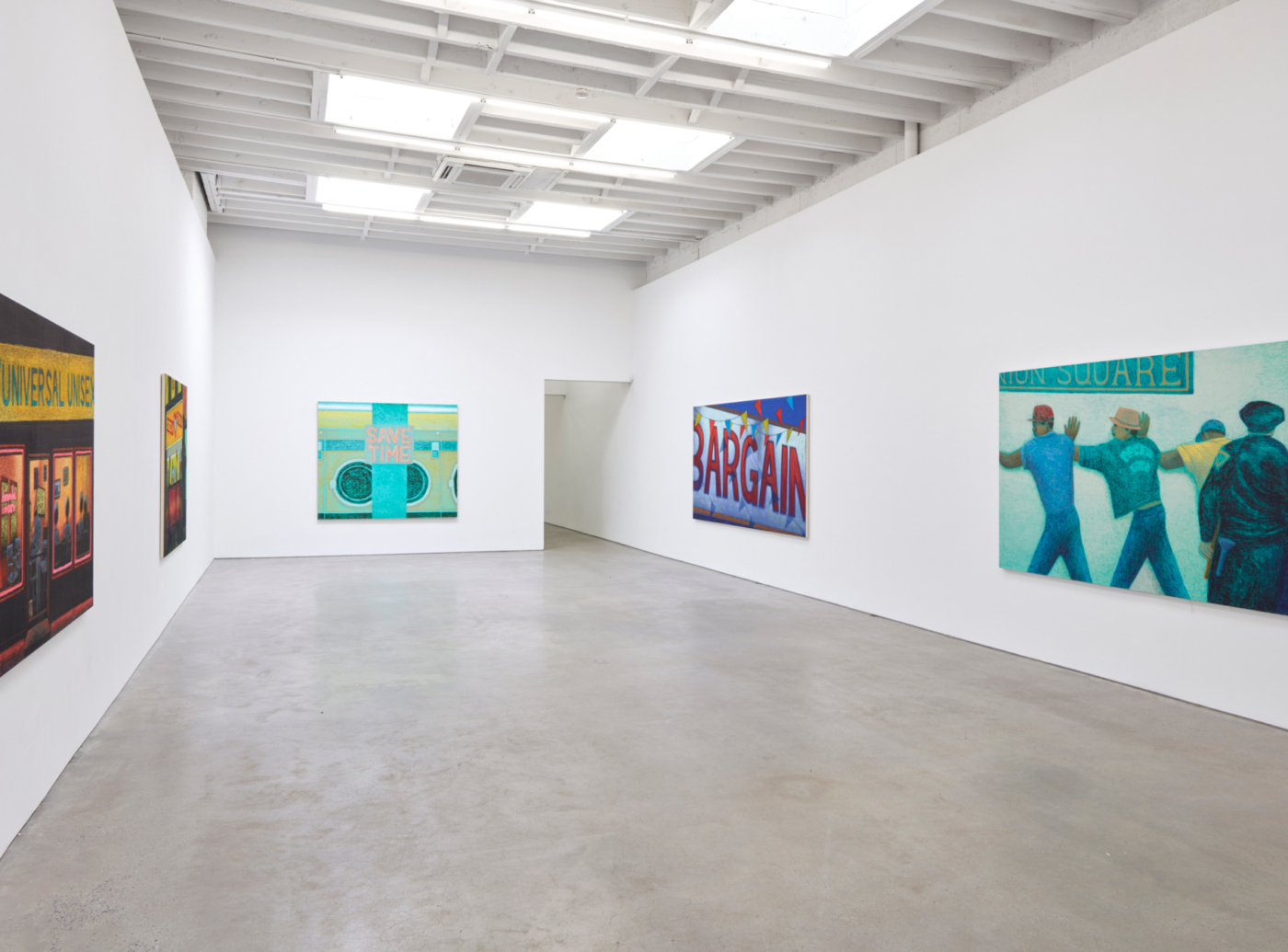
October 13, 2023
Download as PDF
View on The Brooklyn Rail
The sex shops and porn theaters that pervaded the 42nd Street area in the 1970s and ’80s have long since yielded to the Disneyfication of Times Square. For Jane Dickson, however, images of these seedy places have continued to provide a potent source of visual stimulation as well as conceptual aspiration in an ongoing series that constitutes a penetrating critique of American values and social strata. For Promised Land, a show of sixteen recent large paintings at Karma’s two New York galleries and a selection of works on paper in its bookstore, Dickson used her extensive archive of photos (usually nocturnal scenes) as source material evoking the stark contrasts between the haves and have-nots particular to the early Reagan era. In the 1980s, the Chicago-born artist lived and worked in the Times Square area, and many of the photos are candid street scenes shot from the window of her apartment or from the third floor of One Times Square where she was employed for some years as the programmer of Spectacolor, the first digital billboard in the area. “I didn’t think of myself as a photographer,” Dickson told writer Carlo McCormick in a recent interview. “The technical aspects made me too impatient, and I never expected to show these photos.” In her work, she transposes the photographic material into nuanced and vibrant painterly images, employing a wide range of textural effects and textual content. Using various mediums such as oil stick on linen and acrylic on felt, the artist achieves a sense of deep space with intense light and dense shadows, as well as a rough-hewn quality of the surfaces to match the gritty subject matter.
Each of the paintings centers on some form of signage—theater marquees, neon signs for liquor stores and laundromats, spot-lit posters for bargain retailers or pawn shops— glowing in the dark and often illuminating some clandestine human activity. Sizzlin’ Chicken (2023), for instance, indicates an obscure scene of desire, played out beneath the backlit sign of a fast food stand. Here, a trio of shadowy figures on the right is apparently in the midst of cruising or a pickup negotiation, while two figures on the left placing an order with the shop attendant simply desire some fast food. This work and several others such as the elegantly composed Save Time 2 (2023) with its central orange-red neon lettering, “SAVE TIME” glowing in all caps against a turquoise wall of a laundromat, sustain a touch of humor. Most of the works, though, convey a rather sobering tale of inequity, disenchantment, and the misplaced goals of the American Dream that are but inaccessible illusions for many.
In Dreams (2023), a lone figure ambling along the sidewalk of a desolate pitch-dark street wears a sandwich board advertising a venue called Dreams, no doubt a place for some kind of adult entertainment; beyond forlorn, it is a rather tragic image. Up Against The Wall (2023) shows three men of color with hands up, pressed against a subway wall at Union Square; two police officers on the right are apparently in the midst of interrogating and frisking the captives. The painting is an enlargement and embellishment of a Dickson work from 1980, but bears significant resonance today as it addresses issues of racial profiling, incidents of police brutality, and appears emblematic of the abuse of power in general.
Promised Land 1 and 2 (both 2023), feature words in block capital letters reading “Promised Land, Bought, All Cash, Fast Closing” and a phone number. The rather cryptic signage, from a billboard the artist photographed in the Williamsburg neighborhood of Brooklyn, suggests a fast, cash real-estate transaction that is rife in the gentrification of the area in recent years. Presumably posted by a real-estate company named Promised Land, the ambiguous ad begs the question, is the company buying the Promised Land or selling it?



